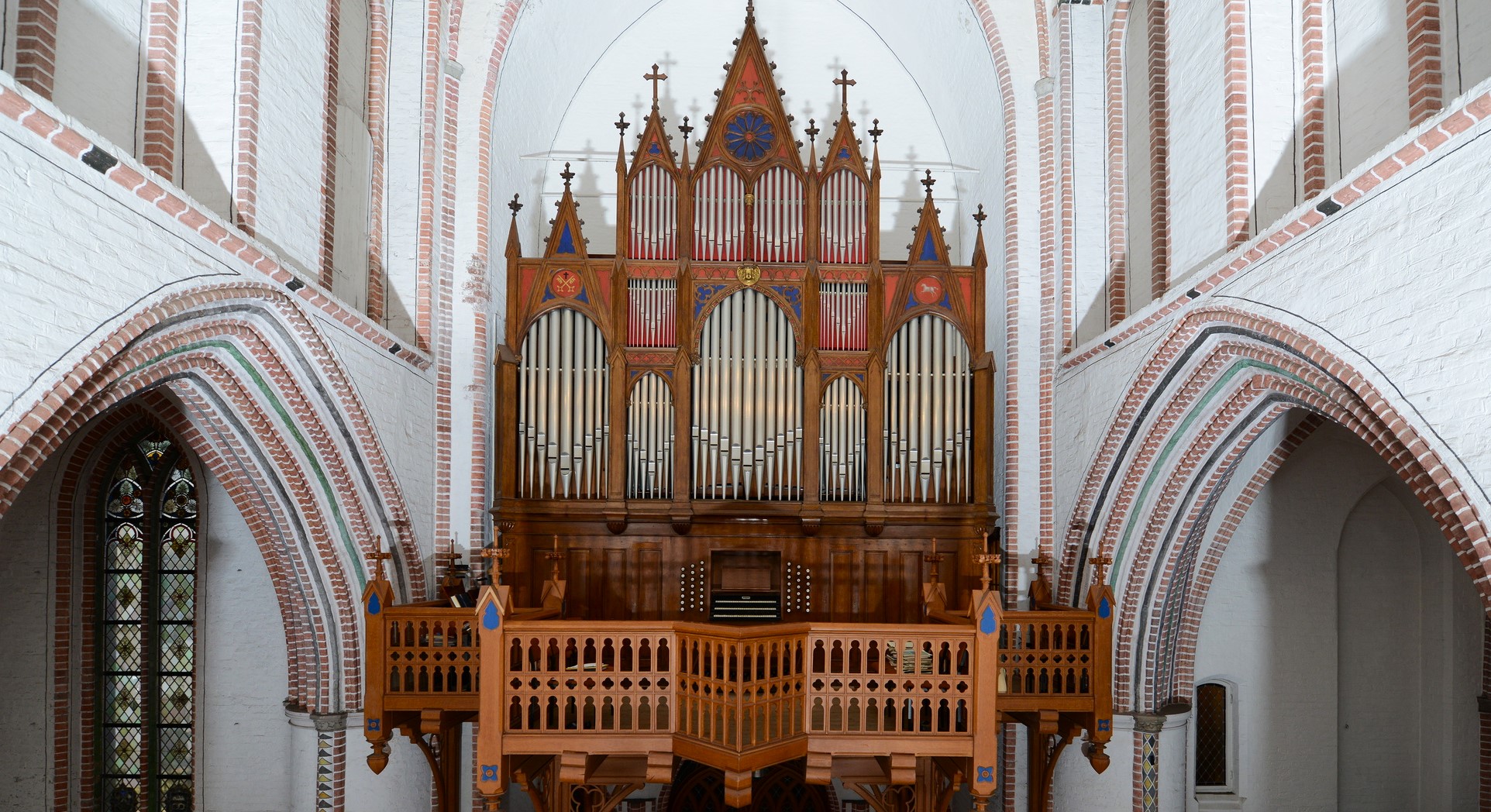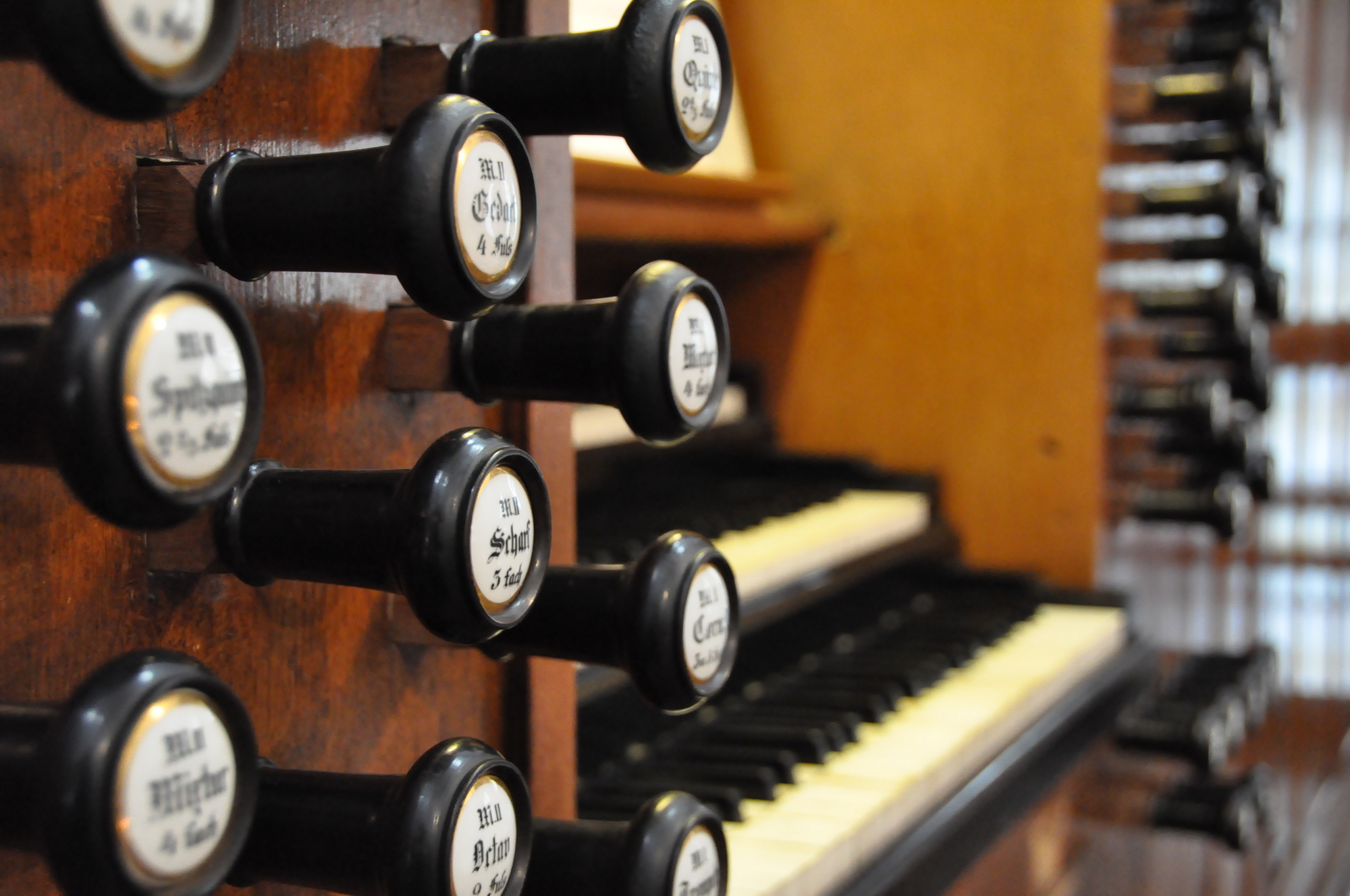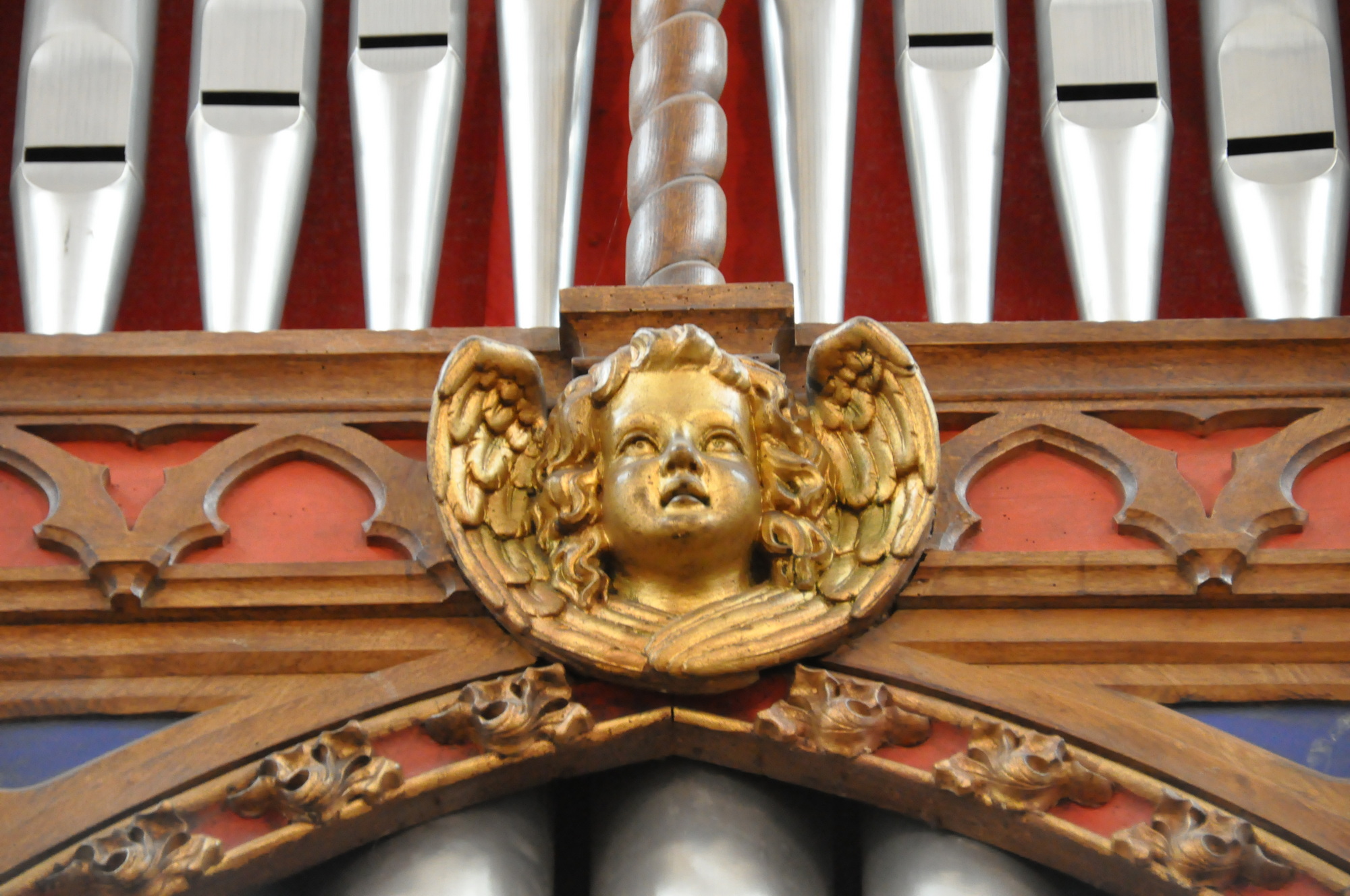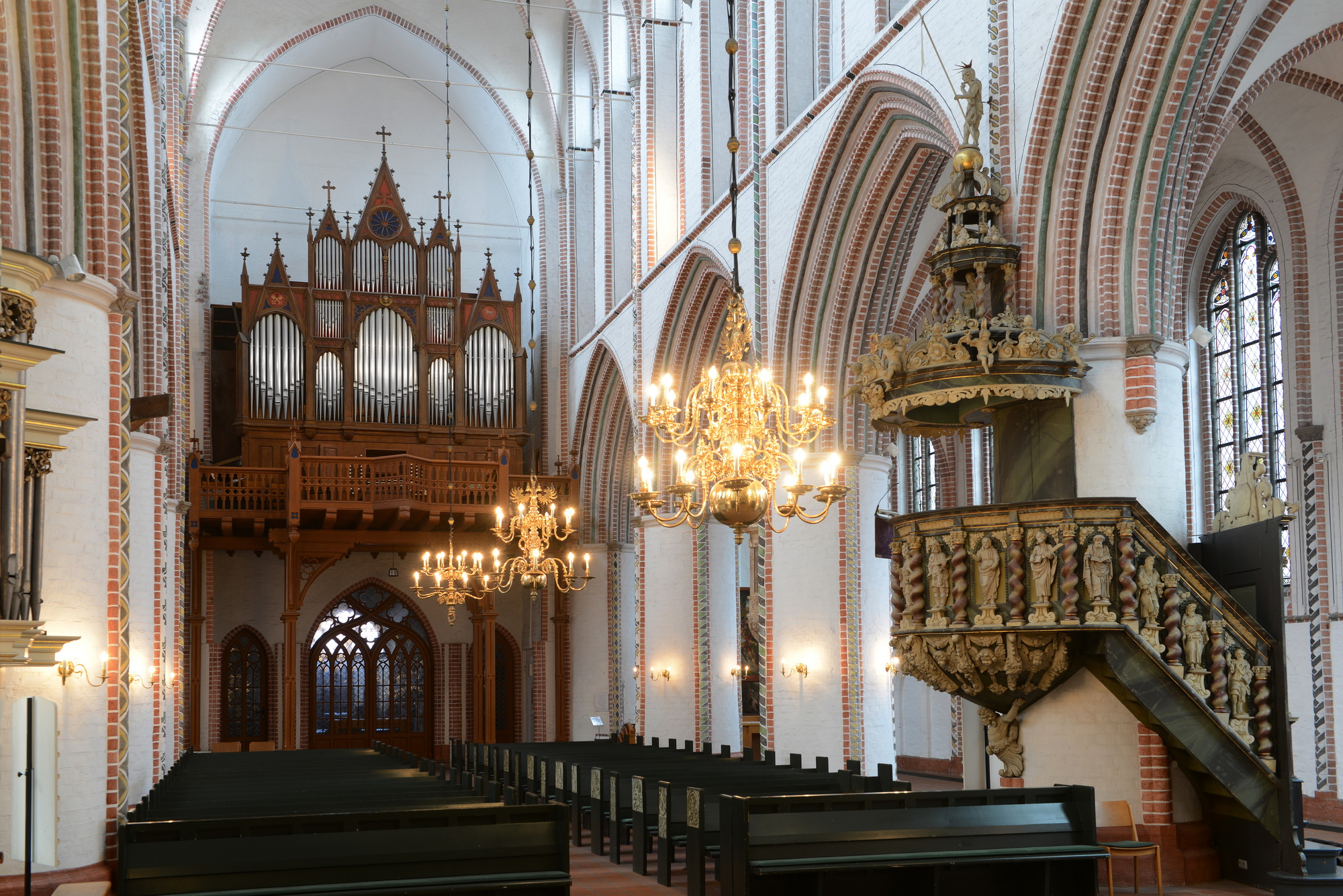Buxtehude, St. Petri-Kirche
| Builder | Furtwängler & Hammer |
|---|---|
| Year | 1859 |
| Period/Style | Romantic |
| Stops | 52 |
| Keyboards | 3+P |
| Keyaction | tracker/mechanical |
| Tuning | Equal at 450 Hz |
The St. Petri Church in Buxtehude houses a significant early Romantic organ built by Philipp Furtwängler in 1859. This organ was constructed following the destruction of an earlier Arp Schnitger organ from 1701, which was lost in a tower fire in 1853. Furtwängler, originally a master clockmaker who transitioned into organ building through self-study, completed the new organ within six years of the fire. Notably, his Buxtehude organ, with its 52 registers across three manuals and pedal, remains one of the largest organs in the region. It features traditional stops suitable for baroque compositions by Bach as well as romantic pieces by composers like Mendelssohn and Brahms.
The organ's case may appear delicate, but it houses 3,300 pipes made of metal and wood, with sizes ranging from nearly five meters to just two centimeters. The organ’s sound is powered by large wedge bellows situated in the church tower, allowing the organ to function without electricity. The instrument was saved from potential demolition through a restoration by Alfred Führer in 1984 and underwent further stabilization and refinement by Rowan West in 2006-2007, ensuring its preservation and enhancing its tonal quality.
The organ's case may appear delicate, but it houses 3,300 pipes made of metal and wood, with sizes ranging from nearly five meters to just two centimeters. The organ’s sound is powered by large wedge bellows situated in the church tower, allowing the organ to function without electricity. The instrument was saved from potential demolition through a restoration by Alfred Führer in 1984 and underwent further stabilization and refinement by Rowan West in 2006-2007, ensuring its preservation and enhancing its tonal quality.
| Manual I | Manual II | Manual III | Pedal Piano/Forte |
|---|---|---|---|
| Bordun 16' | Quintatön 16' | Gamba 16' | Principalbaß 16' |
| Principal 8' | Principal 8' | Geigenprincipal 8' | Subbaß 16' |
| Gemshorn 8' | Hohlflöte 8' | Salicional 8' | Violonbaß 16' |
| Quintatön 8' | Gedact 8' | Spitzflöte 8' | Quintenbaß 10 2/3' |
| Rohrflöte 8' | Gamba 8' | Rohrflöte 8' | Principal 8' |
| Quinte 5 1/3' | Octav 4' | Dolceflöte 8' | Violoncello 8' |
| Octav 4' | Gedact 4' | Flöte 8' | Bordun 8' |
| Gemshorn 4' | Viola 4' | Octav 4' | Octav 4' |
| Rohrflöte 4' | Spitzquinte 2 2/3' | Salicet 4' | Posaunenbaß 16' |
| Quinte 2 2/3' | Octave 2' | Spitzflöte 4' | Trompete 8' |
| Octav 2' | Mixtur IV | Gedactflöte 4' | |
| Cornett III-V | Scharf III | Waldflöte 2' | |
| Mixtur IV | Spitzig II | Harmonia I-II | |
| Cymbel III | Trompete 8' | ||
| Trompete 16' |
No Video/Audio samples available.
https://nomine.net/orgel/buxtehude-st-petri/
 Pipe Organ Map
Pipe Organ Map



